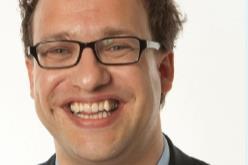De Nederlandsche Bank (DNB), the Dutch pensions regulator, will introduce the new, lower Ultimate Forward Rate (UFR) in four batches until 2024. By taking this step, an ensuing drop of pension funds’ coverage ratios by at least 6% is being smoothed out over a four-year period.
DNB was expected to introduce the new UFR, which is used to calculate pension funds’ liabilities, by 1 January next year. The new interest rate curve, which had been established by a special commission led by former finance minister Jeroen Dijsselbloem last year, would have led to an average 2.5% drop in pension funds’ coverage ratios, it was estimated at the time.
However, the interest rate drop that has occurred since means coverage ratios would now fall by at least 6% if the new UFR would be introduced today, with funds with a relatively young population being affected even more.
The decision comes as a relief for pension funds with a current coverage ratio close to or below 90%, such as ABP, PFZW, PME and PMT. An immediate introduction of the new UFR as of next year would almost inevitably have led to massive pension cuts in 2022.
The Dutch pension fund association, Pensioenfederatie, said in a response it is currently investigating the consequences of DNB’s decision for the coverage ratios of pension funds.
Elegant solution
Wichert Hoekert, senior consultant at Willis Towers Watson, said DNB’s action was “an elegant way” to smooth the impact of the new UFR. The new UFR will be based on market interest rates up to a duration of 30 years, up from the current 20 years.
DNB’s 30-year swap rate stood at 0.198% on 31 July, compared to 1.509% at the start of 2019.
The DNB announcement did not come entirely as a surprise for Hoekert. “The impact of the new UFR would have been extreme. This is why we already had doubts introducing it next year,” he said.
The exact impact of the decision on coverage ratios remains hard to predict, however, because interest rates remain subject to change. “The difference between the old and the new UFR will continue to change over the next four years,” Hoekert added.
The length of the adjutstment period is significant too, as it means the new UFR will be fully in force as of 2024. This is important because it marks the starting point of the transition period to the new Dutch pensions contract.
The level of interest rates will be the most important factor to determine how a pension fund’s assets will be split between the different age groups in a pension fund under the new contract.
€ster
Separately, DNB said it will for now hold off on using the new interest rate benchmark €ster to determine the new UFR because the market for €ster interest rate swaps is deemed not liquid enough as of yet.
This is good news for pension funds, as the introduction of €ster would have put even more pressure on coverage ratios.
Instead, DNB will continue to use Euribor to calculate the UFR. DNB is still planning a switch to €ster at a later stage, but said it will make sure the impact on coverage ratios of pension funds will be neutralised.











No comments yet